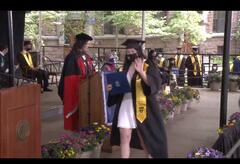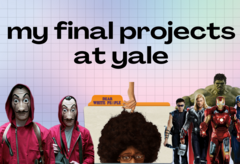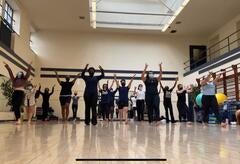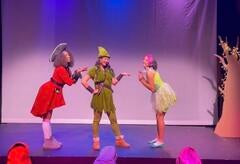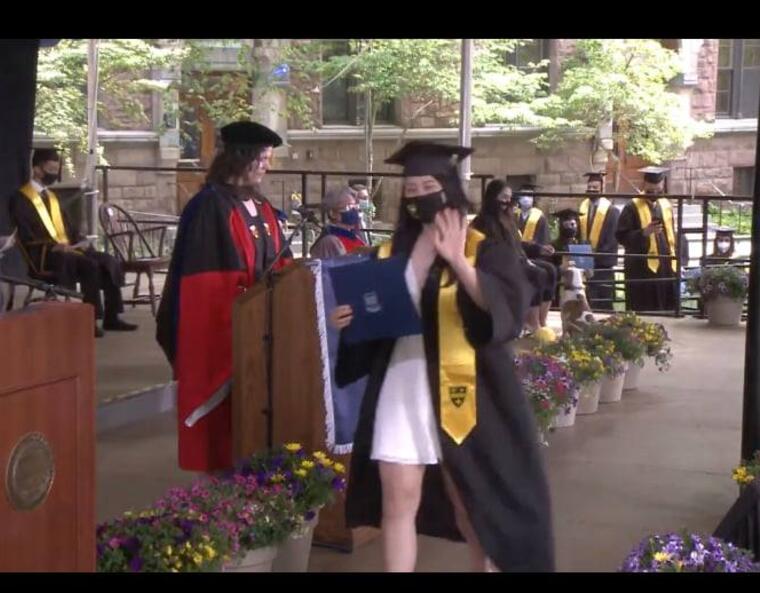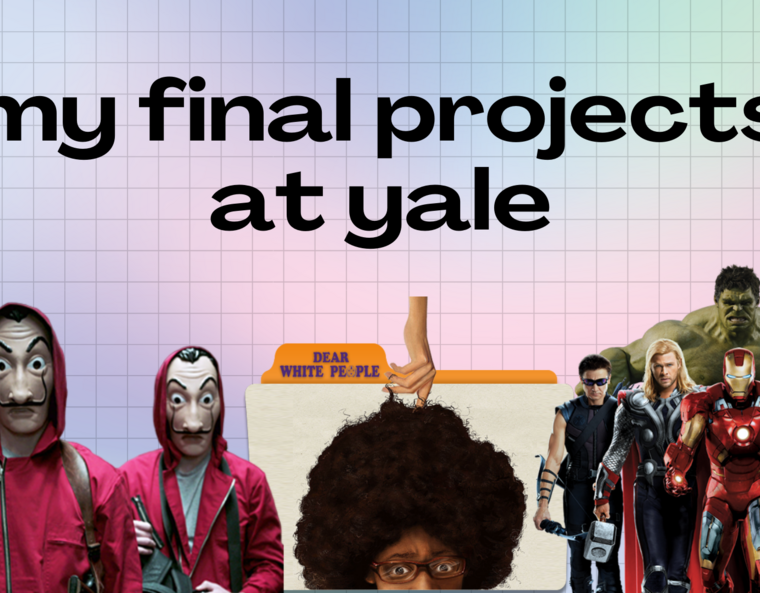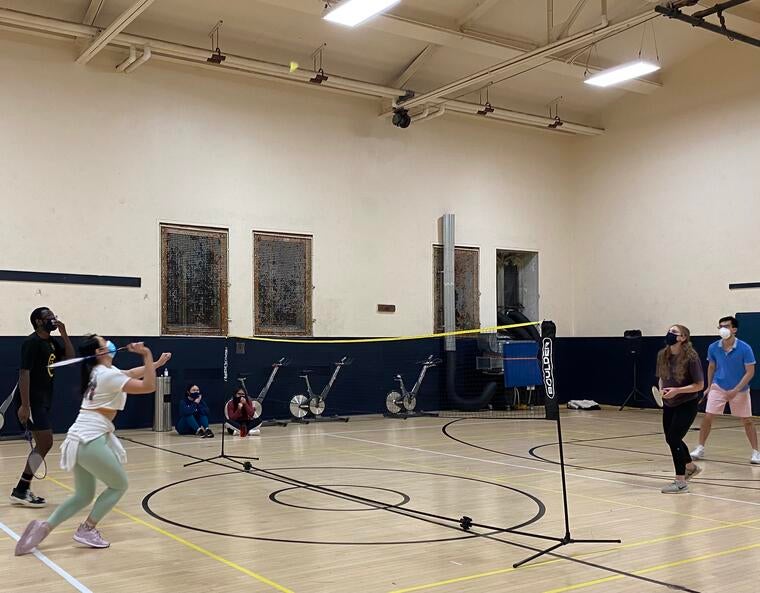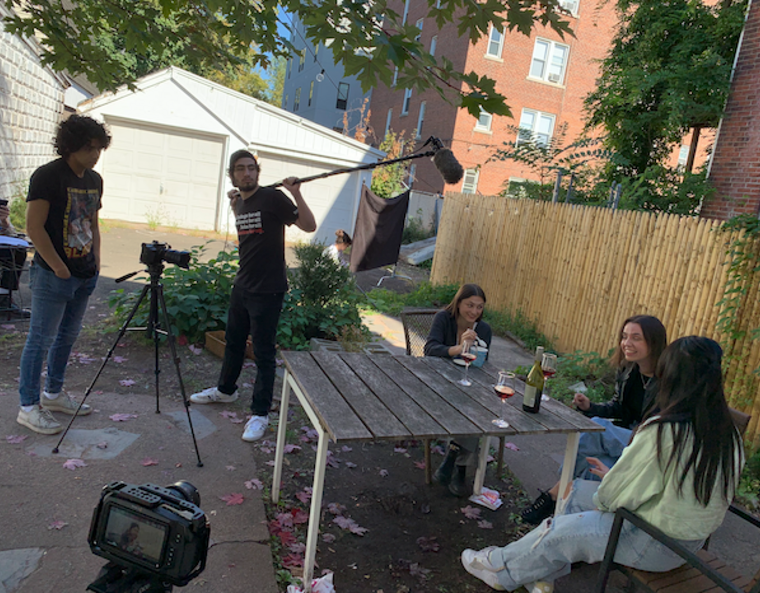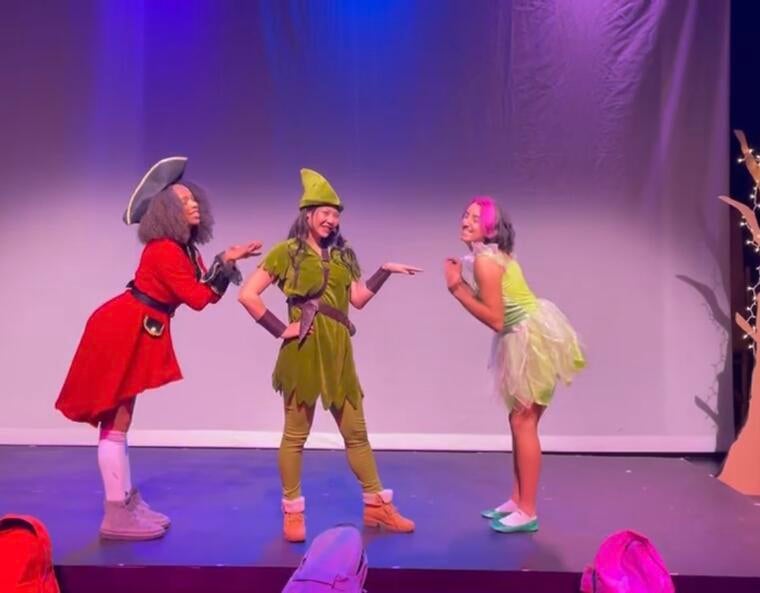
On the first day of classes, I found myself sitting in a circle of fifty students on the floor in Payne Whitney Gymnasium. This was no ordinary class, as signaled by our location and sprawled-on-the-ground posture–which was partly why so many students were shopping it for a coveted 16 spots.
Our professor Michael Rossmy, a youthful man who was described on CourseTable (our course review website) as a “blend of sunshine, puppies, and muscles,” casually pointed to the balcony that overlooks the room and said, “Oh yes, and at one point you all will be jumping off of that.”
I might have audibly gasped. A little theatrical, I know, but how fitting for a class called “Theatrical Violence,” a class only in its second iteration at Yale focusing on basic techniques and theories surrounding stage combat?
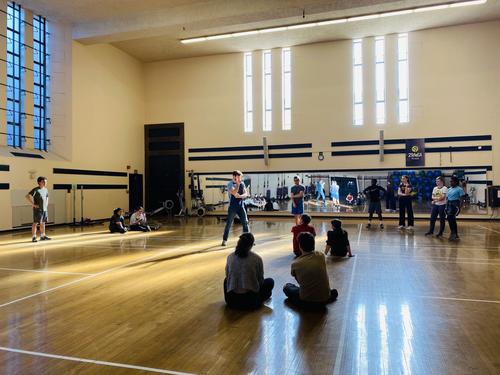
Our instructor Mike!
I desperately wanted to take the class. Where else would I learn the niche art of stage combat, and how to safely “fly?” But more than that, I wanted to take the class because of the instructor, Mike. The way Mike talked about the theoretical constructs of the class captivated me. He emphasized that though we were dealing with all sorts of heavy subject matter, the process itself—the crafting of choreography and physical exploration—should be joyous. That this would be a classroom built on deep trust, camaraderie, and consent, where both verbal and nonverbal “no”’s would be heeded without explanation. He helped us understand consent as a fluid process, not a one-time checkbox—that our given consent could change at any moment in class, because we do not consciously know our bodies and triggers as well as we think we do. I knew without a doubt that this experience would be safe for me. That if I discovered my body’s hidden traumas in the moment, I could step out of the activity at any time.
Safe did not mean, however, that this would be an easy, nor comfortable, class.
On the very first official day of class, we did a collection of walking exercises. Mike directed us in how to walk and how to be hyper-aware of each other’s presence. He taught us how to fall on the ground without hurting ourselves. He tested our visual memory by having us close our eyes and blindly navigate towards a certain person in the room. He then asked us to lift that person into the air with our eyes closed, an ultimate lift of faith. There we were, fifteen students pressing our fellow classmate above our heads, into the sky. When Mike asked us to point his feet towards the door, we shuffled awkwardly in the direction we thought the door was. Finally, we gently lowered our classmate to the ground.
I was deeply shook.
When we debriefed, I asked Mike if we had turned our classmate correctly. “There’s no such thing as ‘correctly,’” said Mike, while someone in the class snapped their fingers in agreement. “I didn’t tell you how to turn, I just said to turn. And you did.”
I thought about that moment all weekend long. I had a feeling that this class was going to challenge me not only physically but in the way I approach the world. Indeed, I was faced with my shortcomings in the very next class, where he taught us how to create the illusion of throwing someone to the ground. I could not exactly master the technique. I realized this was because I was afraid of hurting myself, and more importantly, I was afraid of hurting someone else—even though incorrectly executed technique would not result in anything more than a slightly bruised butt. But I realized this fear was holding me back: a fear that my incompetency would physically hurt others, a fear that in turn, made me incompetent.

Mike teaching us how to “face mush” each other safely, creating only the illusion of violence.
I left class frustrated in myself, and felt a pit of nervousness when I thought about the rest of the semester. But then I reminded myself what Mike had reiterated to us: the process should be joyous. I thought about the laughter that blossomed from our class in both our failures and successes. I thought about the thrill of having no choice but to trust sixteen strangers to literally have your back. I thought about how I fly in my dreams: it isn’t easy, nor smooth, nor effortless. In fact, it’s demanding, and challenging, and terrifying. I suspect this class is the closest I’ll ever get to flying. Though it’s hard work in learning to trust myself and others, this experience will be a breath of fresh air—exhilarating and liberating.

Never thought I’d have an academic class at our 14-story gym.
